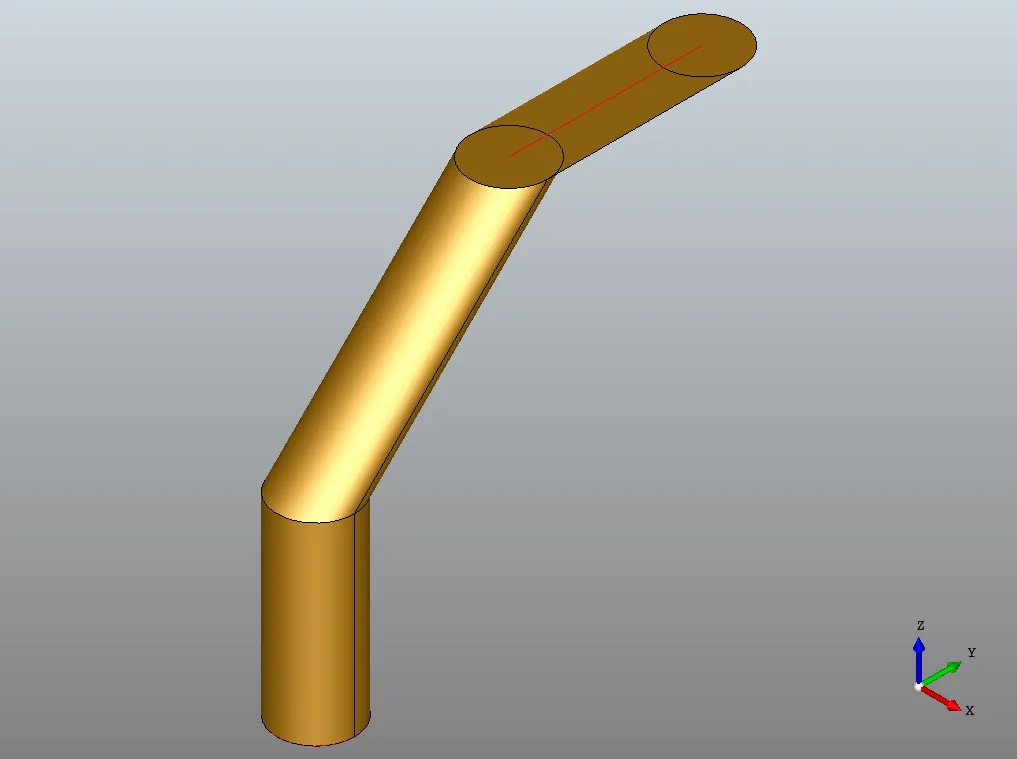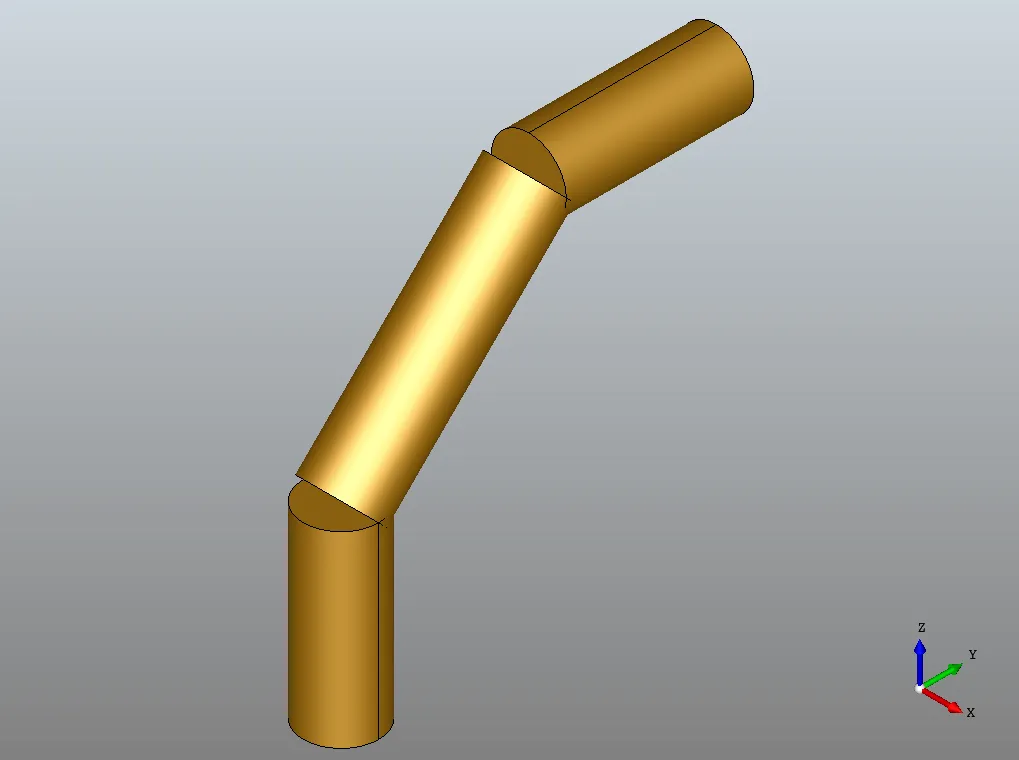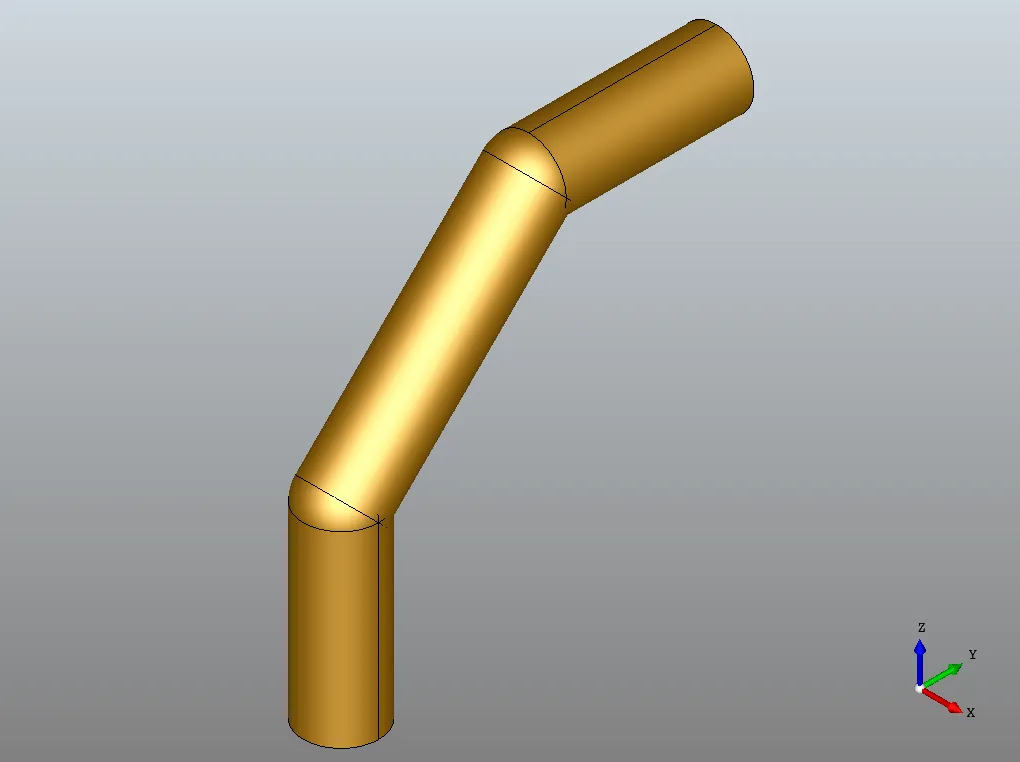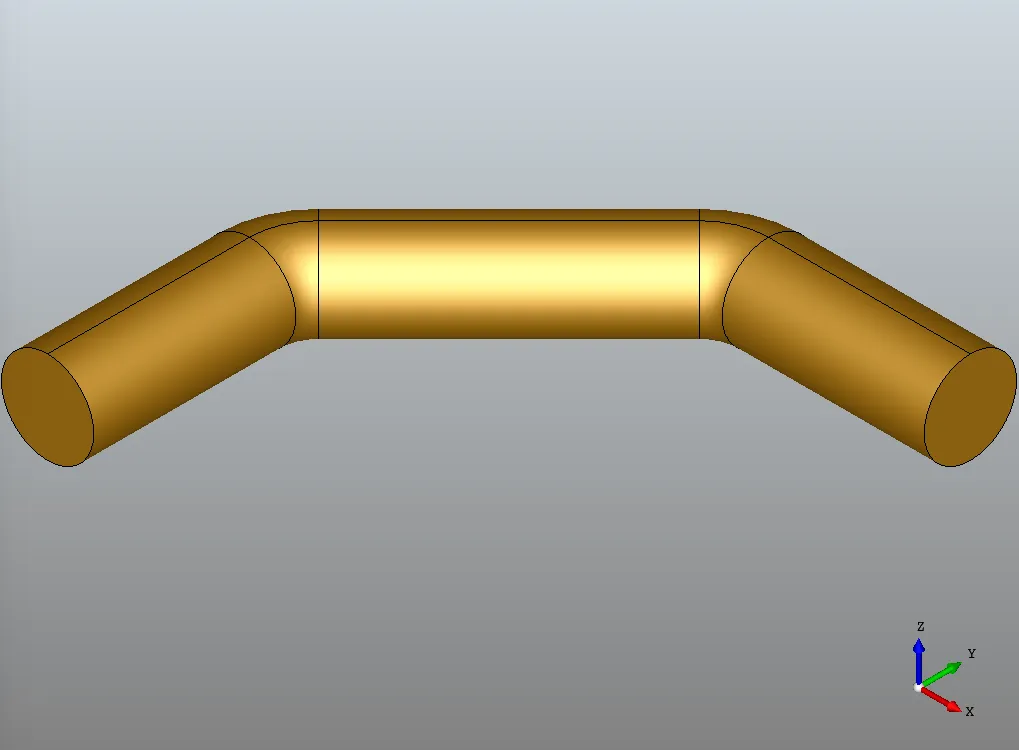我的最终目标如下:
我有一个庞大的数据点集,表示将通过逐层打印来打印零件的方式。我需要在这些点之间创建一条线,并沿着该线挤出一个圆形(以便重建将来打印的部件)。
我最初尝试使用样条曲线,但它会尝试创建平滑的线条,完全不遵循这些点。我尝试更改minDeg和maxDeg选项,但这仍然无法足够帮助我创建所需的实际曲线。
因此,我尝试每次仅在两个点之间创建样条曲线,然后在创建线时将它们全部加在一起。这看起来很有前途,因为现在我确实得到了锐利的拐角和穿过精确点的直线。但是,现在当我尝试沿着它挤压时,挤压剖面的法线不会随着导线的角度而改变。
我已经花费了过去的四天时间来解决这个问题,在许多论坛和问题中尝试了很多,但在pythonocc(opencascade)的世界中感到完全迷失。
我的代码如下:
from __future__ import print_function
from OCC.gp import gp_Pnt, gp_Ax2, gp_Dir, gp_Circ
from OCC.GeomAPI import GeomAPI_PointsToBSpline
from OCC.TColgp import TColgp_Array1OfPnt
from OCC.BRepBuilderAPI import BRepBuilderAPI_MakeEdge,
BRepBuilderAPI_MakeWire, BRepBuilderAPI_MakeFace
from OCC.BRepOffsetAPI import BRepOffsetAPI_MakePipe
from OCC.Display.SimpleGui import init_display
display, start_display, add_menu, add_function_to_menu = init_display()
def pipe():
# the bspline path, must be a wire
# This will later be in a for loop but this is merely to validate the method
using three different points.
array = TColgp_Array1OfPnt(1,2)
makeWire = BRepBuilderAPI_MakeWire()
point1 = gp_Pnt(0,0,0)
point2 = gp_Pnt(0,0,1)
array.SetValue(1, point1)
array.SetValue(2, point2)
spline = GeomAPI_PointsToBSpline(array).Curve()
edge = BRepBuilderAPI_MakeEdge(spline).Edge()
makeWire.Add(edge)
point1 = gp_Pnt(0, 0, 1)
point2 = gp_Pnt(0, 1, 2)
array.SetValue(1, point1)
array.SetValue(2, point2)
spline = GeomAPI_PointsToBSpline(array).Curve()
edge = BRepBuilderAPI_MakeEdge(spline).Edge()
makeWire.Add(edge)
point1 = gp_Pnt(0, 1, 2)
point2 = gp_Pnt(0, 2, 2)
array.SetValue(1, point1)
array.SetValue(2, point2)
spline = GeomAPI_PointsToBSpline(array).Curve()
edge = BRepBuilderAPI_MakeEdge(spline).Edge()
makeWire.Add(edge)
makeWire.Build()
wire = makeWire.Wire()
# the bspline profile. Profile mist be a wire/face
point = gp_Pnt(0,0,0)
dir = gp_Dir(0,0,1)
circle = gp_Circ(gp_Ax2(point,dir), 0.2)
profile_edge = BRepBuilderAPI_MakeEdge(circle).Edge()
profile_wire = BRepBuilderAPI_MakeWire(profile_edge).Wire()
profile_face = BRepBuilderAPI_MakeFace(profile_wire).Face()
# pipe
pipe = BRepOffsetAPI_MakePipe(wire, profile_face).Shape()
display.DisplayShape(profile_edge, update=False)
display.DisplayShape(wire, update=True)
display.DisplayShape(pipe, update=True)
if __name__ == '__main__':
pipe()
start_display()



